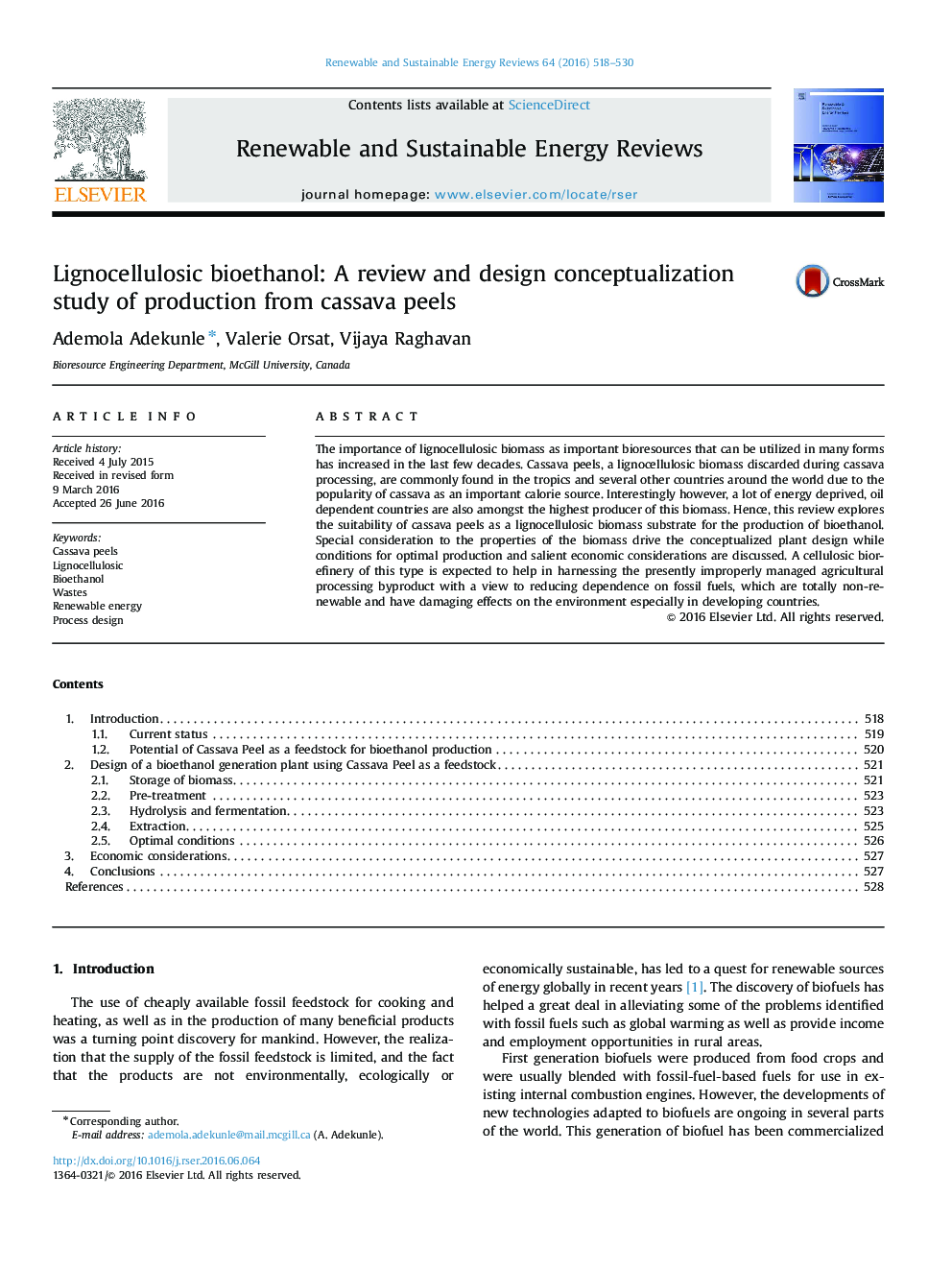| Article ID | Journal | Published Year | Pages | File Type |
|---|---|---|---|---|
| 8113139 | Renewable and Sustainable Energy Reviews | 2016 | 13 Pages |
Abstract
The importance of lignocellulosic biomass as important bioresources that can be utilized in many forms has increased in the last few decades. Cassava peels, a lignocellulosic biomass discarded during cassava processing, are commonly found in the tropics and several other countries around the world due to the popularity of cassava as an important calorie source. Interestingly however, a lot of energy deprived, oil dependent countries are also amongst the highest producer of this biomass. Hence, this review explores the suitability of cassava peels as a lignocellulosic biomass substrate for the production of bioethanol. Special consideration to the properties of the biomass drive the conceptualized plant design while conditions for optimal production and salient economic considerations are discussed. A cellulosic biorefinery of this type is expected to help in harnessing the presently improperly managed agricultural processing byproduct with a view to reducing dependence on fossil fuels, which are totally non-renewable and have damaging effects on the environment especially in developing countries.
Related Topics
Physical Sciences and Engineering
Energy
Renewable Energy, Sustainability and the Environment
Authors
Ademola Adekunle, Valerie Orsat, Vijaya Raghavan,
